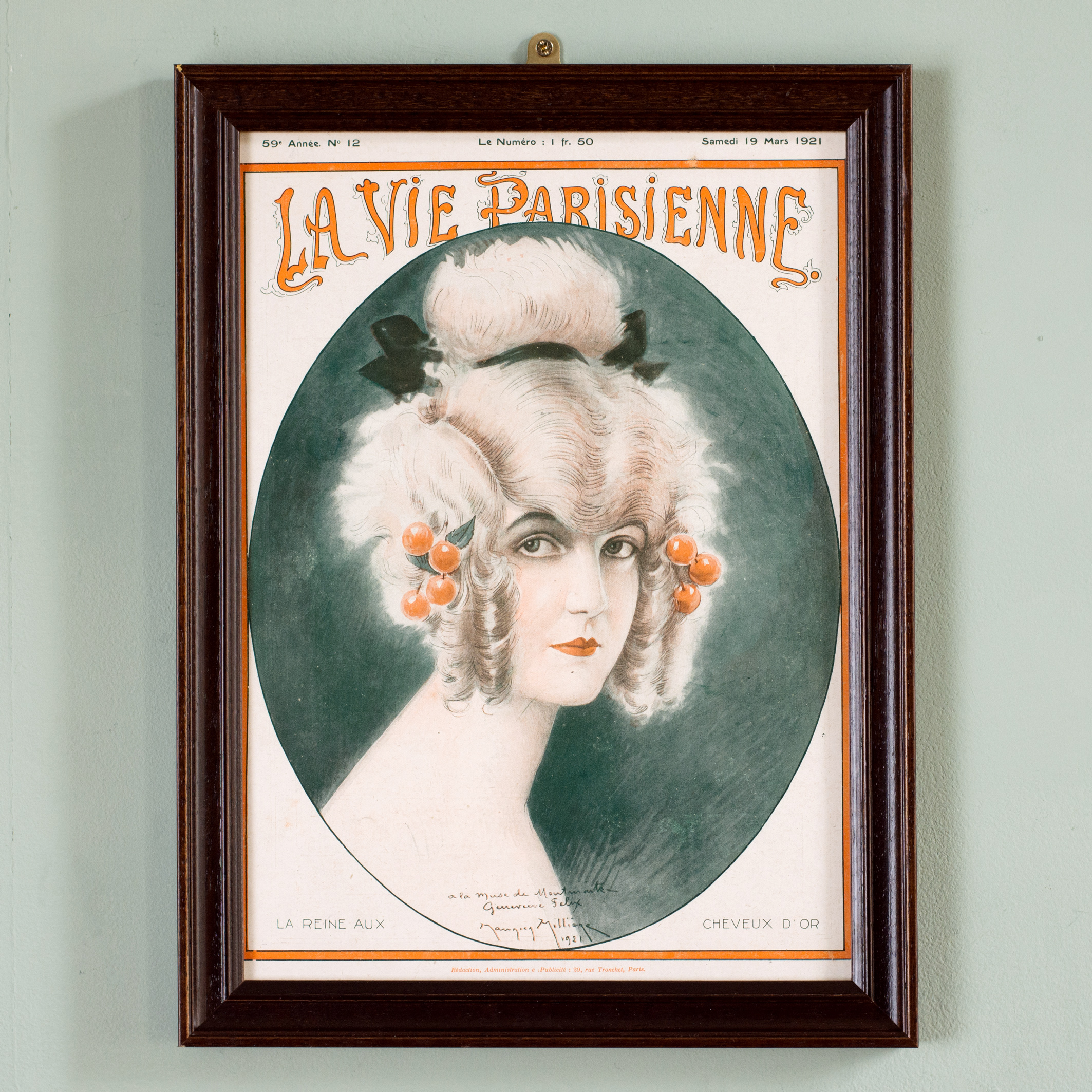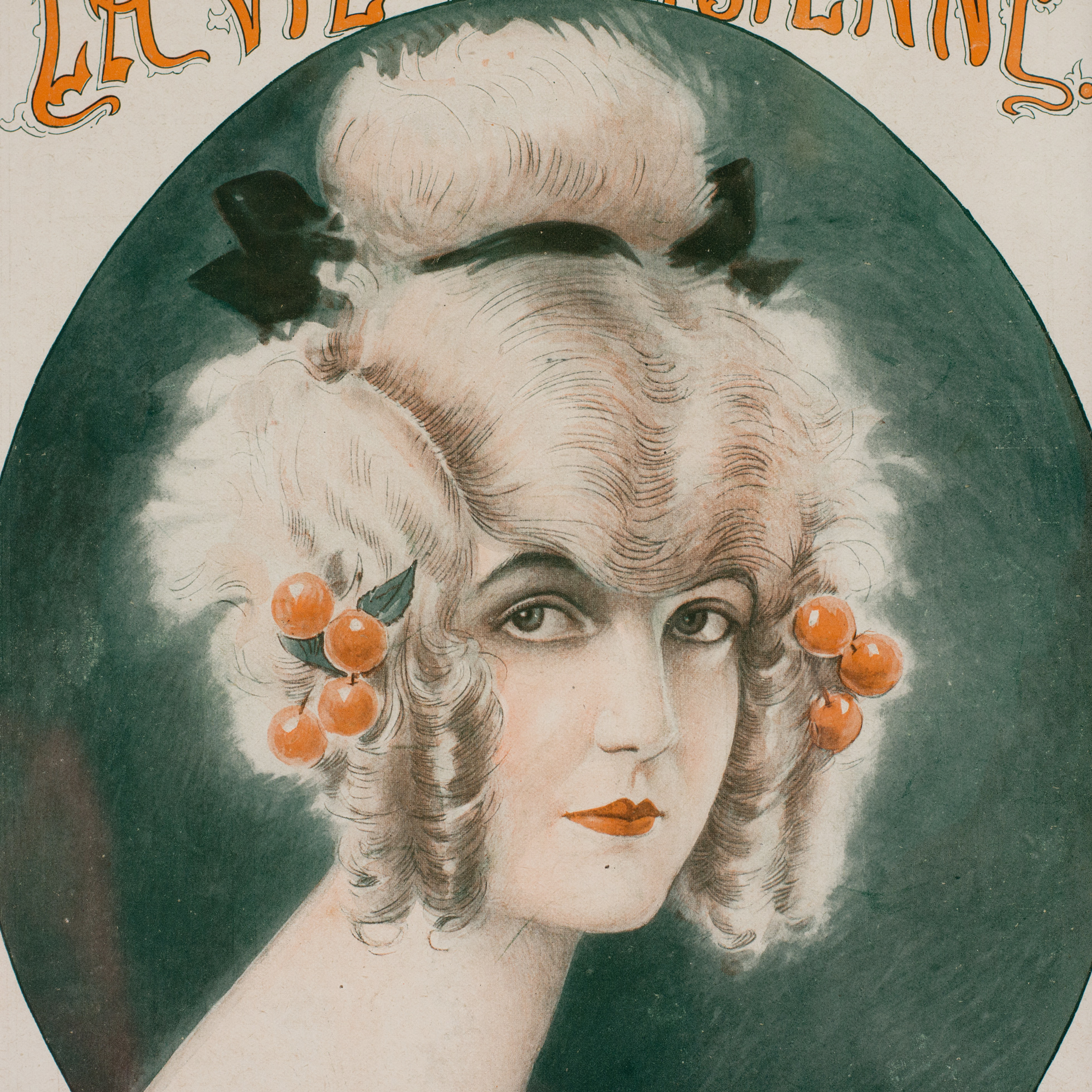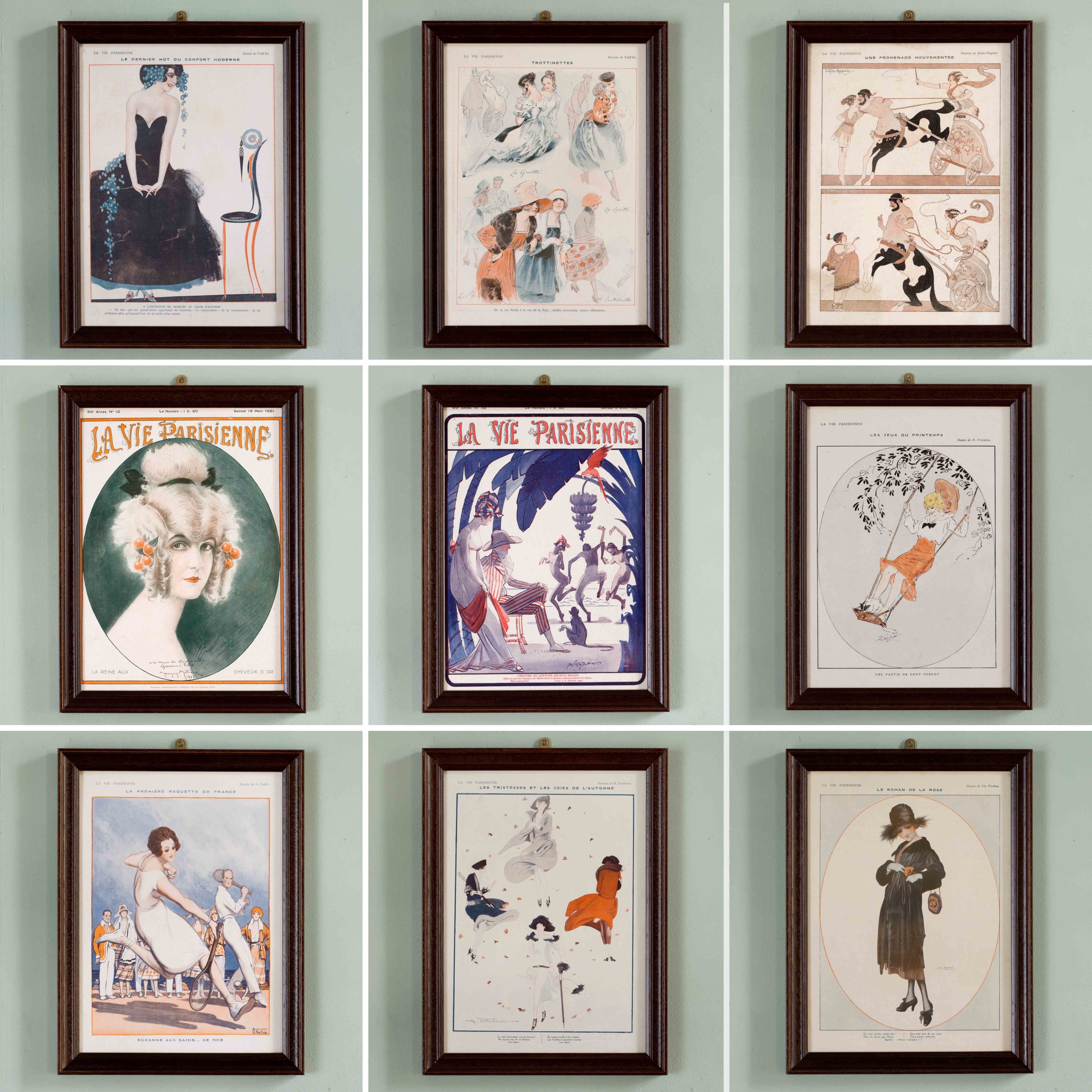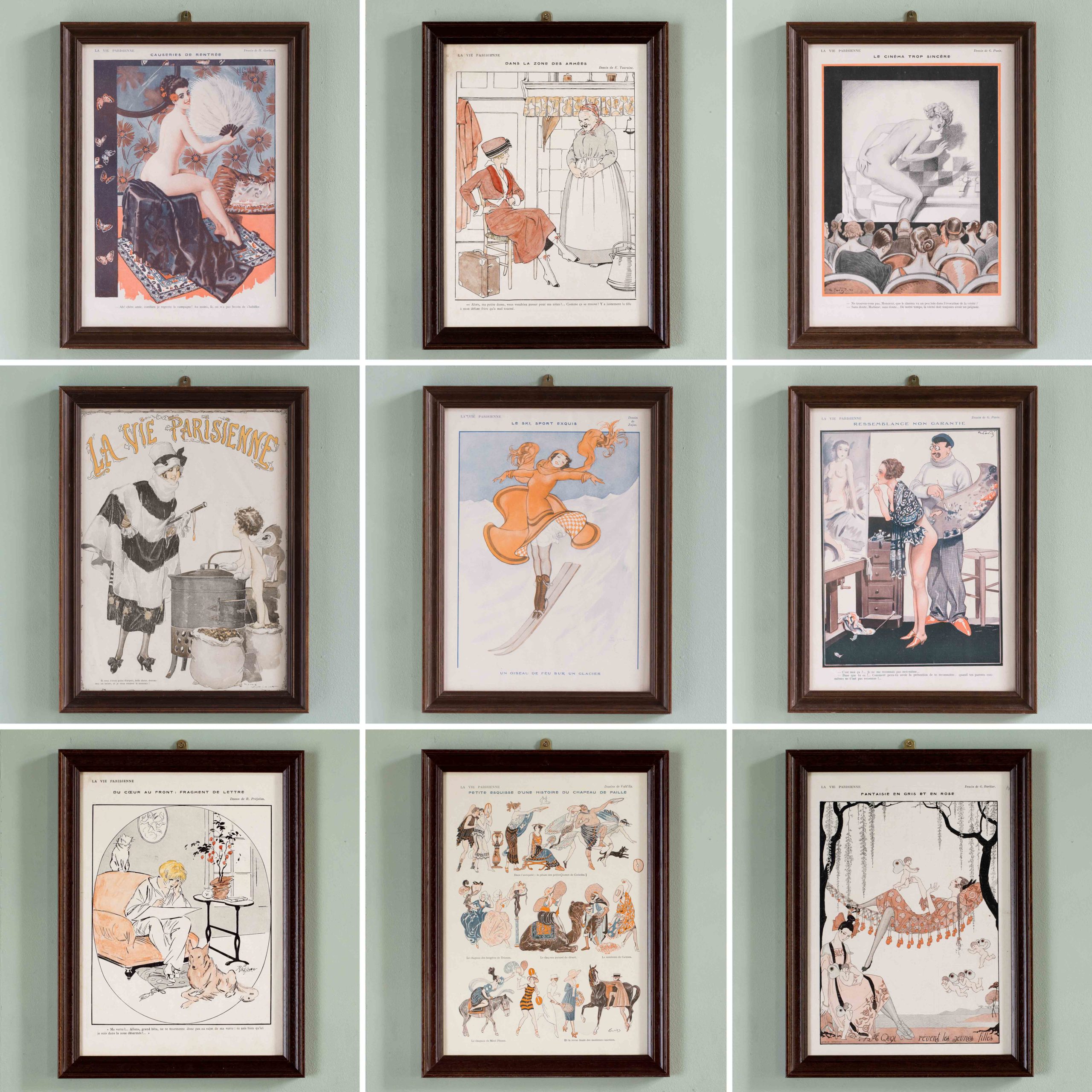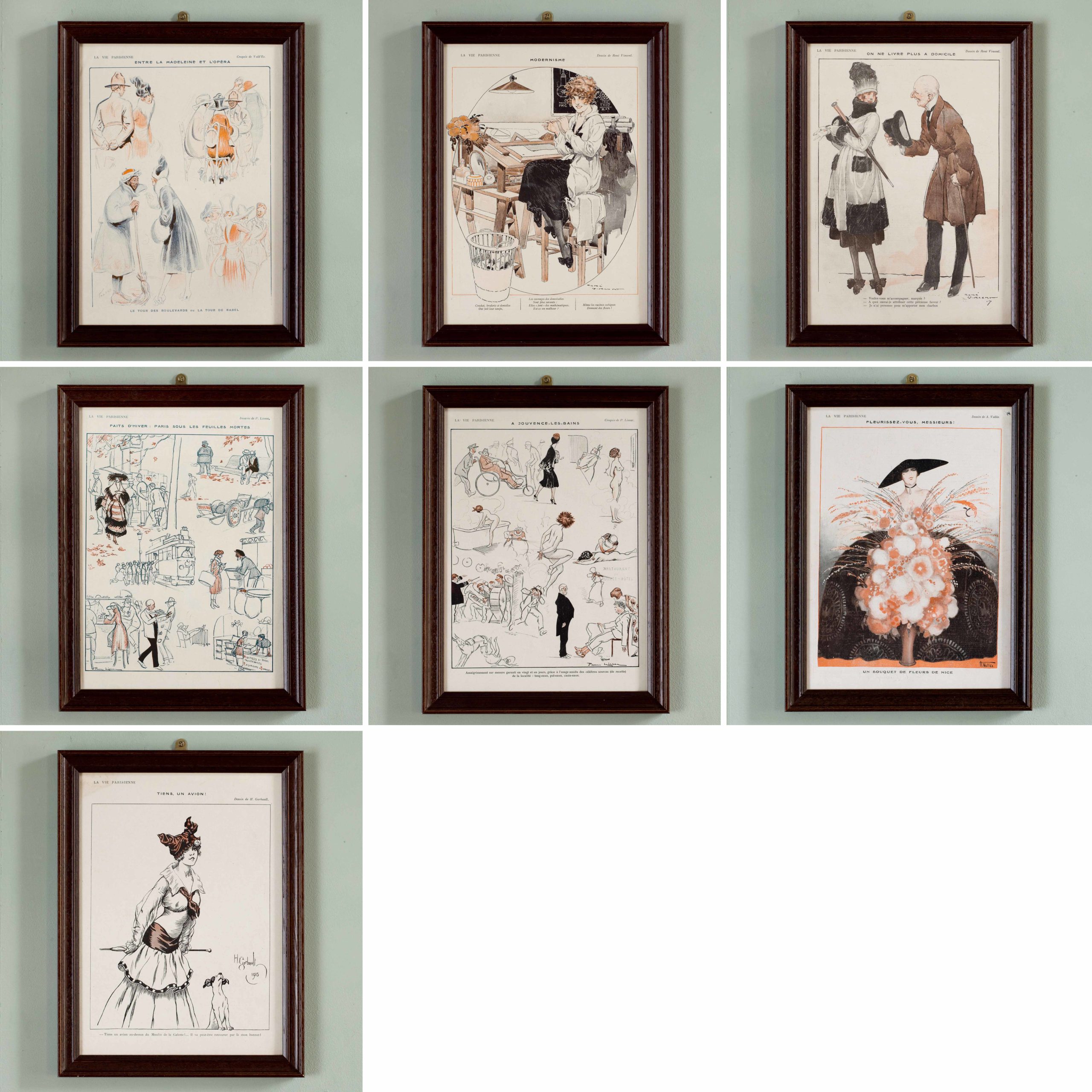Archived Stock - This item is no longer available
La Vie Parisienne (Parisian life)
'Fashion, frivolity and flirting', charming early 20th century lithographs. framed in dark wood.
SOLD OUT
In stock
La Vie Parisienne was a French weekly magazine founded in Paris in 1863 and was published without interruption until 1970. Originally it covered novels, sports, theatre, music and the arts, but in 1905 the magazine changed hands and the new editor Charles Saglio made its format to suit the modern reader. It soon evolved into a mildly risqué erotic publication.
During World War I, General Pershing personally warned American servicemen against purchasing the magazine, which boosted its popularity in the United States. La Vie Parisienne was hugely successful because it combined a new mix of subjects; short stories, veiled gossip and fashion banter, also comments about subjects from love and the arts to the stock exchange. With beautiful cartoons and full-page colour illustrations by leading artists of the age it reflected the changing interests and values of the start of the 20th century population.
The artwork of La Vie Parisienne embraced the early 20th century stylization of Art Nouveau and Art Deco illustration, capturing the zeitgeist, and this coupled with the intellectualism, wit and satire of its written contributions was a combination that proved irresistible to the French public.
Recently Viewed Items
-
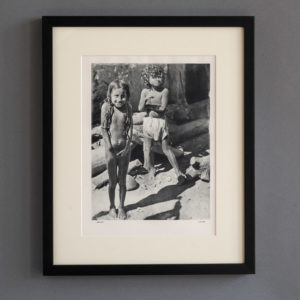
Photographs from Verve, December 1937. Henri Cartier-Bresson
£250 eachPhotographs from Verve, December 1937. Henri Cartier-Bresson
The Verve Review, from its very inception, was a purposefully luxurious art publication. It ran from 1937 to 1960, but for only 38 editions, due to the high degree of design and editorial work dedicated to each issue. Its editor was Stratis Eleftheriades, a Greek National who moved to Paris in the early thirties to take part in the growing Modernist movement, writing under the name of Teriade. As an art critic, patron and gallery owner he commissioned various individuals, artists, photographers and philosophers to contribute to it. Héliogravure is a process for printing photographs that was developed in the first half of the 19th century. It is a photo-mechanical process whereby a copper plate is grained and then coated with a light-sensitive gelatin tissue which had been exposed to a film positive, and then etched, resulting in a high-quality intaglio plate that can reproduce detailed continuous tones of a photograph.£250 each -
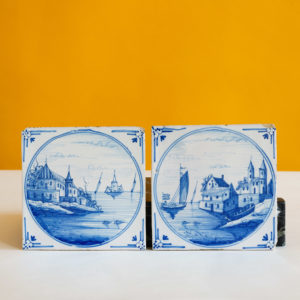
Two Good Blue and White Delft tiles,
£150 the pairTwo Good Blue and White Delft tiles,
The nineteenth century tiles typical in their blue and white decoration are executed with more detail than is usually seen on such tiles. Both having scenes that incorporate seascapes, boats, churches and harbours with slipways. Both painted within roundels with angular decoration to each corner.£150 the pair

